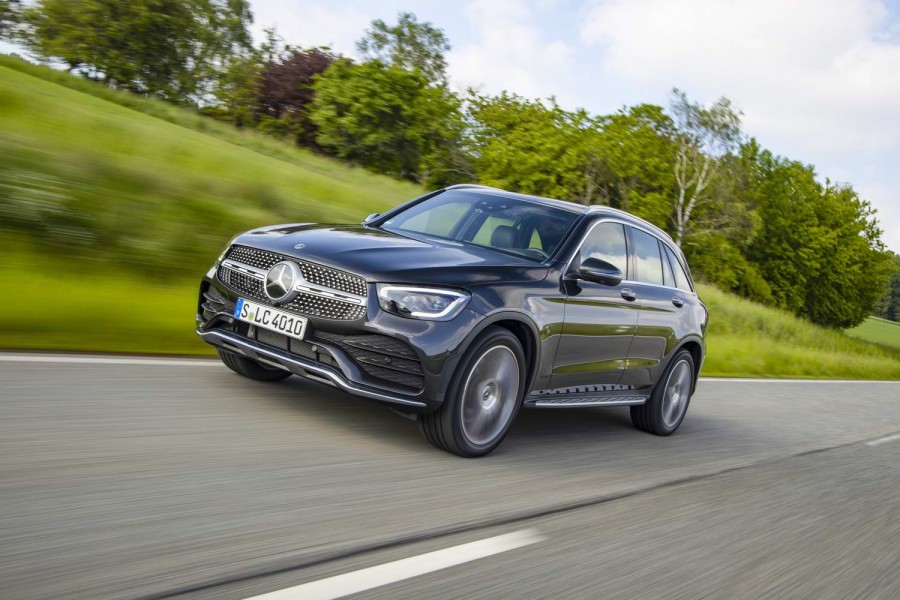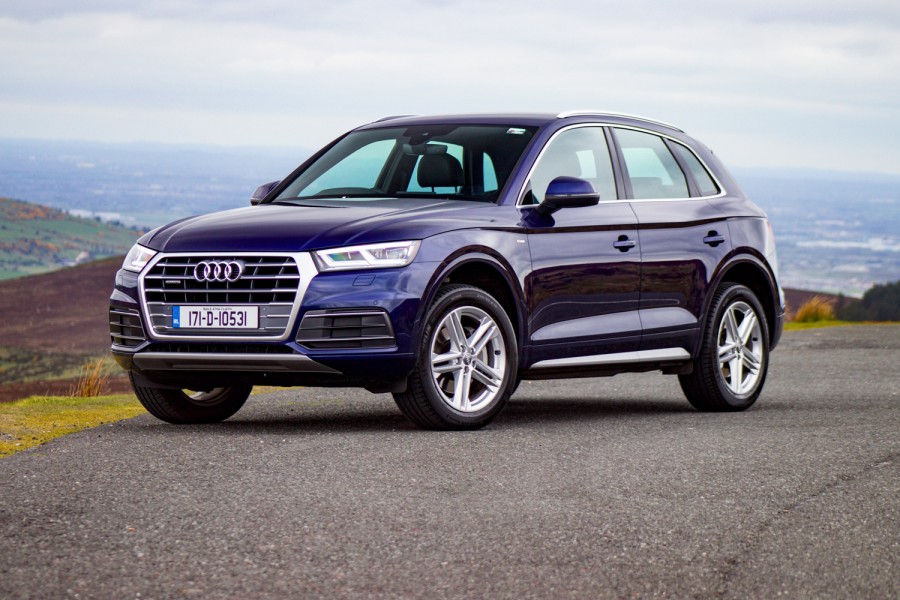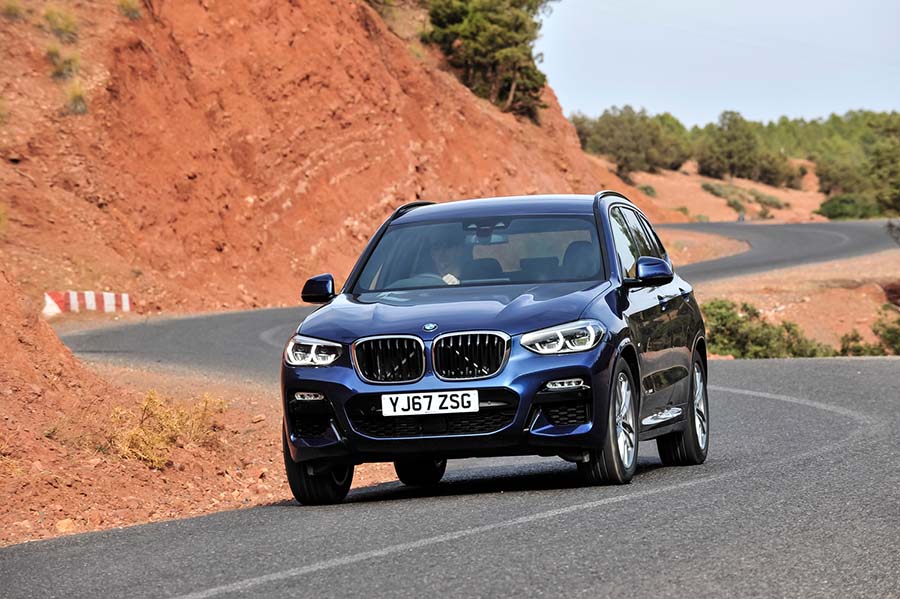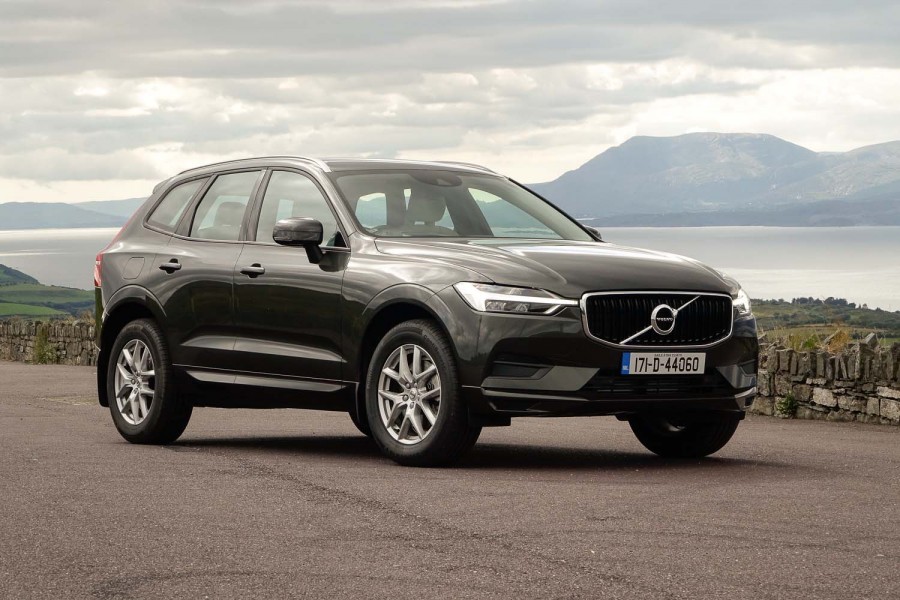The Mercedes GLC has, pretty much since it was launched, been at or very close to the top of the premium SUV crowd. Even with newer, younger rivals on the scene now, this update for the 2020 model year keeps it there. Here we test the new GLC 300 d diesel option.
In the metal
The Mercedes GLC shares pretty much all of its structure and mechanical package with the C-Class saloon and estate, so no prizes for guessing that it's being given the same treatment that the C received last summer - a minor restyle, some new engines and a smattering of new equipment.
There are no major changes on the outside, but the revised bumpers, the new (now all-LED) headlights and brake lights and the updated grille (now wider at the bottom than it is at the top) do freshen things up a little. The GLC remains a rather pleasingly handsome car, if not perhaps quite as attention-grabbing as some rivals.
The cabin receives the same interior upgrades as the C-Class too. There's a new multi-function steering wheel, new digital dials (which really do look rather impressive and which can be configured in a huge number of differing styles) and a larger infotainment screen, which now runs the cutting-edge MBUX operating system. The GLC retains its basic cabin architecture of having separate dials and central screen, so the look of it isn't as impressive as you'll find in some other Mercedes models using MBUX, but it's good enough for us.
The same software means you get the 'Hey, Mercedes' voice recognition assistant (which works tolerably well, although with the usual 'can you repeat that, please?' voice control foibles) and the graphics look rich and expensive. The trackpad controller, although you do get more used to it, is fiddly and not as simple to use as BMW's rotary iDrive alternative.
As an option you can have 'multi-contour' diamond-leather-quilted seats in the front, which are every bit as buttock-friendly as they sound.
The car's safety systems have been improved too. The active cruise control and lane departure steering have been upgraded, while the autonomous emergency braking can now detect if you're about to turn into the path of oncoming traffic, and slam on the anchors.
Boot space, at 580 litres under the tonneau cover, remains good, and space in the back seats is competitive too. All in all, a thorough, if not perhaps all-pervading, update of an already impressive package.
Driving it
Mechanically, the GLC has seen some slightly more far-reaching changes than it has in styling terms. The most important addition is the fitting of the 'OM654' 2.0-litre, four-cylinder diesel engine, in place of the noisy old 2.1-litre unit. This powerplant, already long on sale in the C-Class and Mercedes E-Class, is a far superior unit to the old 2.1, and is much, much more refined.
Not totally refined - there is clatter and rattle from a cold start, and a gruff edge to proceedings when you rev it hard, but the overall impression is of an engine that's far smoother than its predecessor. The same basic 2.0-litre unit does for the 163hp GLC 200 d, the 194hp GLC 220 d (which will be the best-selling models in Ireland) and the car featured here, the new GLC 300 d. With 245hp and 500Nm of torque, it's the same engine that you'll find in the bigger GLE 300 d, but obviously, given that it only has to haul the GLC's relatively lither 1,800kg around, its performance is better still. In fact, it's positively brisk, with a 0-100km/h time of just 6.7 seconds - hot hatch territory. It combines well with the standard-fit nine-speed automatic gearbox, and proves to be a very good all-rounder; happily cruising at high Autobahn speeds and equally adept at shunting through in-town traffic. Most Irish buyers will go for the lower-power versions, and that's fair enough, but they'll be missing out...
The GLC's handling and steering veer more to the solidly competent than the outright engaging, but then again really only the Alfa Romeo Stelvio (in this segment) offers proper driver enjoyment. The GLC feels a cut above the likes of the Audi Q5 and Volvo XC60 in this regard, and about on a par with the BMW X3, although with rather different emphasis. The steering is lighter than you'll find in the BMW, and not quite as responsive, but the GLC's chassis has a fluency and fluidity that you'll come to like, and as with most Mercedes models, the harder the questions you ask, the better it responds. You can sharpen things up with either Dynamic Body Control (steel springs with adaptive dampers) or full air suspension. Fit the GLC with that last option and it turns into a surprisingly competent off-roader. Mercedes put us through the ADAC off-road course near Frankfurt - usually reserved for moto-cross bike events - and it coped admirably, scrambling easily up a 60-degree slope and dealing with deep mud and standing water too. As ever, it's a shame that 99 per cent of customers will never even try to experience the outer edges of the GLC's ability.
What you get for your money
GLC prices are actually coming down, which is a nice surprise. That's because the new diesel engine is better in terms of its emissions, which chops the price a bit, but Mercedes will for the first time introduce a basic rear-wheel-drive model, which will see a starting price of €48,000 for the GLC 200 d version. The Coupe version, with its somewhat awkward chopped-off roofline, is also coming down in price, and will be around €3,000 more, model for model, compared to the standard body type. Mercedes Ireland expects to sell considerably more Coupe versions as a result, certainly more than the roughly 8-10 per cent mix the Coupe has enjoyed so far. Standard equipment isn't bad, but it's a shame Mercedes will still ask you to pay more for the digital instruments and bigger infotainment screen, especially when less premium models offer such things as standard.
Summary
It's rather hard not to see the Mercedes GLC continuing in its role as the best of the premium SUV crop. Yes, on balance, if it were us, we'd go for the mechanically identical C-Class Estate, but people love their SUVs, and at least the GLC has the substance to back up the styling appeal. The new 2.0-litre diesel engine is a big improvement, and the reduction in price is more than welcome. To be honest, there's not really a compelling reason that we can think of not to buy one of these...



























